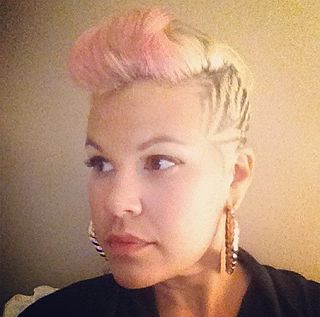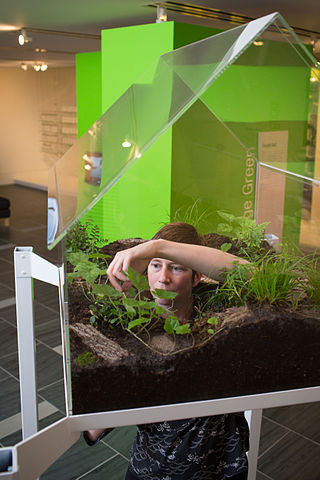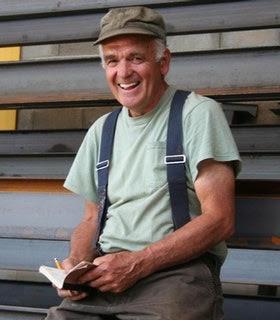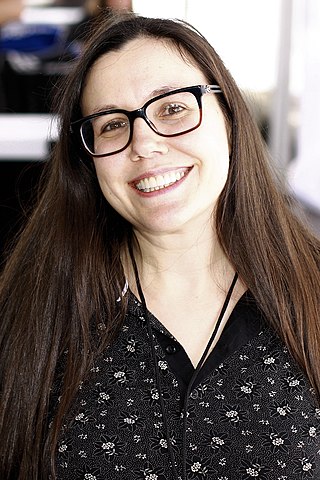This article has multiple issues. Please help improve it or discuss these issues on the talk page . (Learn how and when to remove these messages)
|
Susan Robb is an American visual artist based in Seattle, Washington, United States.
This article has multiple issues. Please help improve it or discuss these issues on the talk page . (Learn how and when to remove these messages)
|
Susan Robb is an American visual artist based in Seattle, Washington, United States.
Susan Robb is a west-coast based interdisciplinary artist who examines the interrelatedness between people and place. Her work has been shown nationally and internationally including exhibitions at the Henry Art Gallery, the Berkley Art Museum, and Blindside Gallery in Melbourne, Australia. Robb was born in Connecticut [1] and attended Syracuse University in New York where she received a BFA in Photography and a BA in Art History. She earned her MFA in photography at the University of Washington in Seattle. She played in the music projects Incredible Force of Junior and Goatmax1. [2]
According to her Creative Capital profile, Susan Robb's work is an "ongoing investigation of people, place and the search for utopia." [3] Drawing on her own travel experiences, the utopian thought at play in intentional communities, and the hands-on ethos of DIY subcultures, she depicts the kaleidoscopic relationship we have with our surroundings. Works such as Sleeper Cell Training Camp,The Long Walk, and Scent of the Trails require spontaneous involvement from her audience and in return deliver a reordering of the expected relationships to each other and their surroundings. She combines poetic applications of technology (from muscle wire circuitry to methane digesters), an interrogation and manipulation of materials (giant black plastic bags to cultured crystals), and a re-purposing of forms and sites (bike parking-as-social hub; hiking trail-as-game space). [4]
Robb has undertaken several long-form project involving travel and site-specific exploration including
Ann Hamilton is an American visual artist who emerged in the early 1980s known for her large-scale multimedia installations. After receiving her BFA in textile design from the University of Kansas in 1979, she lived in Banff, Alberta, and Montreal, Quebec, Canada before deciding to pursue an MFA in sculpture at Yale in 1983. From 1985 to 1991, she taught on the faculty of the University of California at Santa Barbara. Since 2001, Hamilton has served on the faculty of the Department of Art at the Ohio State University. She was appointed a Distinguished University Professor in 2011.

Heather T. Hart is an American visual artist who works in a variety of media including interactive and participatory Installation art, drawing, collage, and painting. She is a co-founder of the Black Lunch Table Project, which includes a Wikipedia initiative focused on addressing diversity representation in the arts on Wikipedia.

Vaughn Bell is an environmental artist working with sculpture, installation, performance and video, who lives and works in Seattle, Washington. Vaughn received her MFA from the Studio for Inter-related Media at Massachusetts College of Art in Boston, MA and her undergraduate degree from Brown University, where her work focused on "Nature and Culture: Human Perspectives on the Natural Environment".

Nancy Davidson is an American artist best known for large-scale inflatable sculptures regarded as hyper-feminized abstractions of the human female form. Bulbous and flesh-like, the sculptures resemble buttocks and breasts and employ erotic cultural signifiers in their shape and decoration. Davidson's work spans art media but centers around sculpture. It is largely post-minimal in character and described by commentators as providing a feminist counterpoint to the male-dominated, minimalist sculpture of the 1960s, as well as to cultural tropes involving bodies that the works themselves invoke. Of particular note are Davidson's use of humor and a sense of absurdity to seemingly both celebrate and subvert these tropes, inviting their investigation but without the seriousness and moralism that often accompany critical works. Sculpture Magazine critic Robert Raczka wrote that "The confectionary color and oversize scale" of Davidson's sculpture creates a "playfully upbeat mood that allows feminist and gender issues to rise to the surface at irregular intervals, without didacticism." The New Art Examiner's Susan Canning described it as establishing "a context where all can revel in the transgressive and liberating power of the grotesque."

George Trakas is a sculptor who was born in Quebec City in 1944 and has lived in New York City since 1963. Many of his projects are site-specific installations, and he describes himself as an environmental sculptor. He often recycles local materials and incorporates them into his work. Trakas taught sculpture at Yale University for 13 years and has also taught at other schools.
Aleah Chapin is an American painter whose direct portrayals of the human form have expanded the conversation around western culture’s representations of the body in art. Described by Eric Fischl as “the best and most disturbing painter of flesh alive today,” Chapin’s work has explored aging, gender and beauty, influenced in part by the community within which she was raised on an island in the Pacific Northwest. More recently, Chapin's work has taken a radically inward shift, expanding her visual language in order to better express the turbulent times we are living in. Consistent throughout her career, Chapin’s work asks the question: What does it mean to exist within a body today?
Sheila Klein is a sculptor and public artist living and working in Bow, Washington and Buenos Aires, Argentina. Her practice straddles the worlds of architecture, sculpture, installation and traditional women's crafts. She is particularly noted for her monumental projects dressing public buildings with hand crocheted and knitted steel. She lives on a farm in the Skagit Valley near Seattle, Washington with her artist husband Ries Niemi, and sons Rebar and Torque. Sheila has created numerous public art projects across the USA, and maintains a parallel studio practice as a sculptor and installation artist.

Simone Leigh is an American artist from Chicago who works in New York City in the United States. She works in various media including sculpture, installations, video, performance, and social practice. Leigh has described her work as auto-ethnographic, and her interests include African art and vernacular objects, performance, and feminism. Her work is concerned with the marginalization of women of color and reframes their experience as central to society. Leigh has often said that her work is focused on “Black female subjectivity,” with an interest in complex interplays between various strands of history. She was named one of the 100 most influential people in the world by Time magazine in 2023.
Humaira Abid is a contemporary artist who was born in Pakistan. The main element she works with is wood. Her recent work combines traditional miniature painting with wood sculpture. Her work examines women's roles, relationships, and taboos from a cross-cultural perspective.
Katrín Sigurdardóttir is a New York-based artist who works in installation and sculpture. Katrin studied at the Icelandic College of Arts and Crafts, Reykjavík and received a BFA from the San Francisco Art Institute and her MFA from the Mason Gross School of the Arts, Rutgers University. She creates complex structures built to be viewed in exhibition settings but not used as functional architecture. Conceptually, her work reflects issues of intimacy and memory in built spaces, historical recreations, and disorienting shifts in scale. Her work has appeared at the 2013 Icelandic Pavilion of the 55th Venice Biennale, the 33rd São Paulo Bienal, in 2018, The Metropolitan Museum of Art, Sculpture Center, and PS1 Contemporary Art Center.
Norie Sato is an artist living in Seattle, Washington. She works in the field of public art using sculpture and various media–including glass, terrazzo, plastic film, stone, and metal–and often incorporating lighting effects, landscaping, mosaics, prints, and video. She frequently collaborates with architects, city planners, and other artists and specializes in integrating artwork and site specific design.

Jina Valentine is a contemporary American visual artist whose work is informed by the techniques and strategies of American folk artists. She uses a variety of media to weave histories—including drawing, papermaking, found-object collage, and radical archiving.
Ruby Lerner is an American arts executive. She ran Creative Capital, an arts foundation, from 1999 to 2016. Under her leadership, Creative Capital committed $40 million in financial and advisory support to 511 projects representing 642 artists. She stepped down from the organization in June 2016.

Straight Shot is a 2007 public art work at the Sand Point calibration baseline in Magnuson Park, Seattle. It was created by Seattle artist Perri Lynch, and funded by the City of Seattle's 1% for Art program, Trimble and the Washington Surveyors Association. The baseline at Sand Point predates the development of Magnuson Park, and was originally at the western edge of the Navy's Naval Air Station Seattle runway at the location. The artwork was created in part to illustrate the importance of the baseline to surveyors and to preserve the baseline – "in peril of being destroyed" – as a part of the park. The work has been nicknamed "Linehenge" by surveyors.

Elissa Washuta is a Native American author from the Cowlitz people of Washington State. She has written two memoirs about her young adulthood, Starvation Mode: a Memoir of Food, Consumption and Control and My Body is a Book of Rules, about her personal history with eating disorders and body dysmorphia. She writes about sexual assault, mental health issues as a young adult, and struggling with her identity within the Indigenous community of the Pacific Northwest Coast.
Mary Ann Peters (1949) is an American artist. Her large scale paintings and installations deal with the themes of immigration and the refugee crisis. She is a founder of COCA.

619 Western is a building at 619 Western Avenue in Seattle.

Anna Mlasowsky is a German artist. She is known for her experimental and boundary pushing work in glass and is recognized as one of the leading female artist working in glass today.
Pat DeCaro is an American artist based in Seattle, Washington. She has lived in the Pacific Northwest since 1980, where her works are held in the collections of the Northwest Museum of Art, the Washington State Arts Commission, the Seattle Office of Arts and Culture, and the Pilchuck Glass School. DeCaro’s work has been exhibited in numerous solo and group shows in the United States and Europe. She received the 2012 Twining Humber Award for lifetime achievement in the arts.
Samantha Boshnack is a Seattle-based trumpeter, composer, and bandleader of contemporary jazz music.